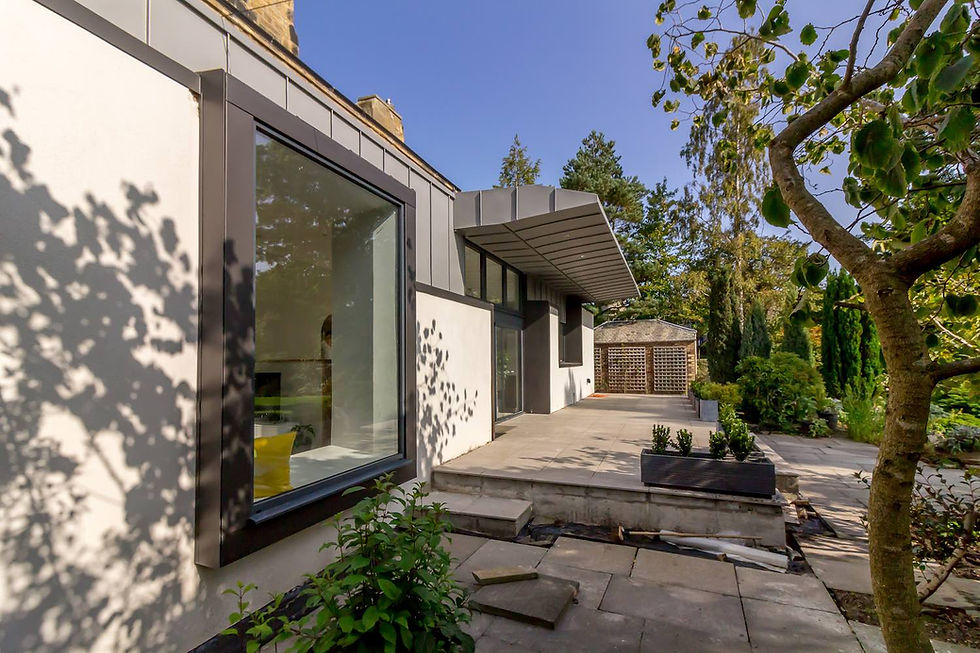Dropping a New Design into an Old Building
- Níall Hedderman
- Dec 27, 2020
- 3 min read

Most of the projects I work on involve altering or extending peoples homes, either building a brand new extension or re-arranging the existing layout. This job in Eskbank, Midlothian, was different. There already was a large extension to the rear and the building had more than enough space for the client, the house just wasn’t laid out very well.

This floor plan of the existing ground floor shows the problem, the front of the house has a classic Victorian layout with two formal rooms and a large entrance hall. This would all be fine except those formal rooms face north, towards a busy road. The existing extension at the rear overlooks a beautiful, mature garden but the layout was a mess, split over several levels and across different rooms.

The existing extension had been altered several times over its life, the previous owners had added an conservatory to bring the garden closer to the house, with limited success. My client had recently bought the house and wanted to move the main space of their home to the rear of the property. The main debate was how to do this, should we knock the extension and build new or create a new extension off the rear of the existing extension?

When I looked round the house it was apparent the existing extension was well built, with very thick external wall. Knocking it would be expensive and adding another extension wouldn’t resolve the mess that was the inner layout. After some discussion the solution we arrived at was to keep the thick external wall but strip out exerting else; the floor, the partitions and the roof. We would ‘drop’ and new, modern design into the existing, older building.
This is a floor plan showing the eventual proposal, everything shown in dashed, red line would be demolished. The new extension would be a simple, open plan layout with a kitchen, dining and living area overlooking the garden. The space would have its own side entrance from the driveway.
There was lot of work between this and starting construction but the contractor mobilised on site January 2020. It quickly became apparent that the original structure would not go quietly. Taking down the roof and internal walls revealed several surprises but the existing floor was the worst, having a large footing buried deep inside which had to be carefully excavated.
This photos gives some idea of the messy reality when dealing with older buildings. We always knew the external walls would not take kindly to this intervention and we designed a separate steel structure to carry the load of the new building.
This 3D image shows how the complex, interlinked steel frame would be formed. The following three technical drawings show some of the detail required to allow the contractor to successfully build the structure.

Once the demolition work was done the contractor formed the steel frame and infilled it with a timber frame. The drawings above show how the new structure would be integrated into the existing fabric.

At this point the building was really taking shape, just in time for the Great Covid Lockdown of 2020 to bring work to a screeching halt. The site was secured and the contractor paid up to date. Then we waited.
When the contractor was able to return to site we faced another major problem, the construction industry supply chain was severely disrupted. Bags of cement were rationed, plasterboard was hard to find, insulation was in short supply and the glazing we had ordered in February wouldn’t arrive until late July. A contract which was due to run from January to May was now going to last until September.
Eventually work was completed and the end result is fantastic.

The rear elevation is light and well balanced.
This shot shows the original intention, with the new structure dropped into the old building.

The original stone arch was incorporated into the new space, creating a link between new and old.

The open plan space connects directly to the rear garden. The large cantilever roof provides a sheltered, intermediate space between inside and out.

The deep wall allows for a deep window cill, where the client can sit and contemplate their garden.

The kitchen has a large, ribbon window overlooking the garden.

The original house is connected to the extension by an archway in the entrance hall.

The new side entrance re-used existing stone to form the steps.
The finished product is one I am very proud of.



Comments